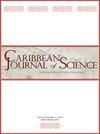“走出古巴”——玛丽-维多利亚兄弟在加勒比地区的额外植物探险(1940-1942)
IF 0.5
4区 生物学
Q4 BIODIVERSITY CONSERVATION
引用次数: 0
摘要
玛丽·维克托林是蒙特利尔植物园的创始人,也是加拿大植物学史上最重要的人物之一。1938年至1944年间,他对古巴进行了七次大型植物探险,发现了几个新的古巴特有种。蒙特利尔大学文献与档案处进行的档案研究表明,在他前往古巴的航行中,他于1940年、1941年和1942年三次前往加勒比海其他地区。特别是巴兰基亚(哥伦比亚)、海地、牙买加、波多黎各、特立尼达和尤卡坦(墨西哥)。我们找不到他1940年前往尤卡坦半岛的任何书面记录;然而,我们找到了一组幻灯片。他1941年访问哥伦比亚、牙买加和特立尼达的一篇33页的游记被发现、研究并翻译成英文,并附有注释。此外,我们审查并解读了他发表的两篇论文,其中描述了1942年对海地和波多黎各的访问。在这三次“离开古巴”的航行中,没有收集到任何植物材料;然而,Marie Victorin兄弟的书面描述和他拍摄的502张照片为20世纪40年代的加勒比社会,以及在该地区工作的博物学家和植物学家,以及他们遇到的植物和栖息地提供了独特的见解。Marie Victorin兄弟的记录突出了牙买加和特立尼达对非洲人后裔的种族歧视。看来,这些旅行并没有导致重大的植物学研究举措。此外,他为在植物园或植物研究所进行潜在繁殖而收集的少数藏品目前已不再种植。这些旅行有明确的休闲目的,主要是了解访问地区的社会、植物区系和植物科学研究活动。本文章由计算机程序翻译,如有差异,请以英文原文为准。
“Out of Cuba” – The Additional Botanical Expeditions of Brother Marie-Victorin Across the Caribbean (1940–1942)
Abstract Brother Marie-Victorin was the founder of the Montreal Botanical Garden, and one of the most important figures in the botanical history of Canada. Between 1938 and 1944, he undertook seven major plant exploration expeditions to Cuba that resulted in the discovery of several new Cuban endemics. Archival research carried out in the Division de la Gestion de Documents et des Archives (University of Montreal) revealed that during his voyages to Cuba, he made three major side-trips in 1940, 1941, and 1942 to other regions of the Caribbean. Specifically to Barranquilla (Colombia), Haiti, Jamaica, Puerto Rico, Trinidad, and Yucatan (Mexico). We could not find any of his written accounts of his 1940 voyage to the Yucatan; however, we were able to find a collection of photographic slides. An unpublished 33-page travelogue of his 1941 trip to Colombia, Jamaica, and Trinidad was discovered, studied, and translated into English, with annotations. Furthermore, we examined and interpreted two of his published papers that described the 1942 visits to Haiti and Puerto Rico. During these three “out-of-Cuba” voyages, no plant material was collected; however, Brother Marie-Victorin's written accounts and the 502 photos that he took provide unique insights into Caribbean society of the 1940s, as well as on the naturalists and botanists working in the region, and the plants and habitats they encountered. Brother Marie-Victorin's records highlight racial discrimination against those of African descent in Jamaica and Trinidad. It appears that these trips did not lead to major botanical research initiatives. Furthermore, the few collections that he made for potential propagation in botanic gardens or botanical institutes are not currently being grown any longer. The trips had clear leisure aims and they were centered on learning about the society, the flora, and plant science research activities of the visited areas.
求助全文
通过发布文献求助,成功后即可免费获取论文全文。
去求助
来源期刊

Caribbean Journal of Science
综合性期刊-生物多样性保护
CiteScore
1.00
自引率
25.00%
发文量
21
审稿时长
>12 weeks
期刊介绍:
The Caribbean Journal of Science publishes articles, research notes, and book reviews pertinent to natural science of the Caribbean region. The emphasis is on botany, zoology, ecology, conservation biology and management, geology, archaeology, and paleontology. The mission as a nonprofit scholarly journal is to publish quality, peer-reviewed papers and to make them widely available.
 求助内容:
求助内容: 应助结果提醒方式:
应助结果提醒方式:


